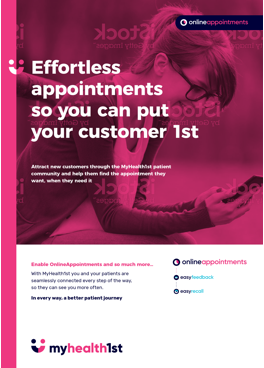
With the lockdown and social distancing rules in place, there has been an unprecedented, but necessary shift online in everyday life. While the Internet has long been an integral part of modern Australian life, the lockdown has made it an essential service, with people working, attending classes and shopping online more than ever before.
Australia Post is currently having trouble keeping up with delivery demands, in part because of social distancing measures and limited hours, but also because of the fact that Australians are shopping online for everything on a scale usually only seen at Christmas, Boxing Day or Black Friday . By Mid April, online alcohol sales were up 168%, department store shopping by 185% and medicines/hygiene products 236%. Those numbers aren’t expected to decrease any time soon.
In a preemptive move, a number of Australian universities moved forward the semester break so they could implement measures moving classes online, while others are transitioning at a slower rate. Making it easy for students to attend classes without putting them at risk of contracting the coronavirus or breaking social distancing protocols.
The Australian Government has eased restrictions on telehealth Australia wide, making remote healthcare services available to everyone. Enabling people to access healthcare without requiring them to live in a remote area or have problems stopping them from easily accessing healthcare gives all Australians the ability to access healthcare in a manner that doesn’t put them, or a practice at risk of infection.
Most healthcare modalities have guidelines or restrictions relating to the kinds of services that can be offered during the pandemic in an effort to reduce risk of infection. Balancing restricting service and still catering to the needs of patients can be a difficult balancing act. In a recent technical guidance paper , the World Health Organisation recognised and recommended telehealth as an alternate model for delivering essential healthcare services while reducing the risk of viral transmission.
Australia’s move to online healthcare is new, but much like the coronavirus it is expected to spread at an exponential rate, with more and more people utilising this “new” way of connecting with healthcare professionals in the coming weeks and months. Two main factors will drive this expansion; convenience and fear.
The convenience factor speaks for itself - the ability to connect with a doctor online from home gives patients an easy way to attend a 15 minute healthcare appointment in 15 minutes, not however long it takes to commute to the practice and then wait for the appointment, attend, then head back home
The fear factor takes a little more explaining. There is a growing concern that patients are neglecting to present to hospitals out of the fear that they will either expose themselves to COVID-19 in the practice itself, or will take medical attention away from patients who may need it more. This concern also seems to be affecting healthcare practices across nearly all modalities, with fewer patients booking appointments than would normally be seen.
Offering patients a way of connecting with your practice that doesn’t require them to be physically present, or using telehealth as a tool to triage patients to advise them as to whether they should present for a face to face appointment is the clearest and easiest way to allay these fears, retain existing patients and attract new ones during the pandemic.
MyHealth1st has partnered with Coviu to develop EasyTelehealth , a browser-based, end-to-end encrypted telehealth solution that works with any device with a screen, camera and microphone, such as smartphones, tablets and PCs.
A Reluctance to Return to the Status Quo
The coronavirus pandemic isn’t going to last forever, and at some time in the hopefully not too distant future, the restrictions on services and social distancing will be relaxed or repealed. While this may sound like a return to business as usual it is highly unlikely to be so easy. Once the genie is out of the bottle it’s hard, if not impossible to get it back in.
Viewing telehealth, and online health options as a whole, as a short term solution to the problem of COVID-19 could definitely be shortsighted. Once a new technology has been introduced, and the market has experienced the benefits it can offer, very rarely does that technology disappear until it has been supplanted by something that offers more. What’s more, failing to embrace new technologies is a sure way to fall behind the curve when it comes to what patients expect. Treatments advance with new technologies and discoveries. The way treatments are offered needs to change as well.
Australia is slow when it comes to embracing telehealth technology on a wide scale, but if the evidence of other countries in the Asia-Pacific region is anything to go by, we’ll soon see a massive uptake in usage. Both China and Indonesia have embraced app based telehealth. The most popular health app in China, Ping An Good Doctor boasted over 228 million registered users in 2018, and now that the service is offering free video chat advice on COVID-19, the numbers of users have increased almost exponentially. In Indonesia, the Halodoc app has two million registered users and 20,000 registered doctors.
Since the launch of these apps, they have not supplanted traditional face to face medicine but complimented it, allowing people the freedom and opportunity to see to their healthcare needs in a new, convenient way. With the relaxed guidelines for telehealth in Australia, even at these early stages of telehealth acceptance, it’s highly unlikely that the acceptance of telehealth by the Australian public won’t mirror that of our neighbours.
Efficiency and Overhead Benefits
The convenience factor of telehealth is not just applicable to patients. Telehealth offers nearly unprecedented convenience and efficiency to practices as well. Of course connecting remotely with patients limits the risk of contracting COVID-19 or other infectious diseases, but the benefits of telehealth don’t end there.
- Increase in practice revenue due to expanded reach and accessibility
Telehealth consults don’t require proximity, allowing practices to engage with patients from around the country, greatly expanding the reach of the practise. The added accessibility offered to patients through telehealth services also makes it easier for new patients to engage with the practice.
- Reduced practice overhead
Previously telehealth consults required doctors to be on site at a clinic but the new legislation allows many specialists to work from home when delivering telehealth services, allowing for a practice to utilise remote workers to maximise reach while not requiring extra on-site infrastructure and spending. It’s unknown if these relaxed restrictions will extend past September, but even if they don’t, not having physical proximity means that appointments can be attended efficiently, and no cleaning, disinfecting or physical space preparation needs to be done between appointments.
- Reduced patient no-shows
Patients who book online are far less likely to miss an appointment, as are patients who book telehealth consults.
- Triage and Aftercare
Even if you can’t offer services directly via telehealth, the technology can be very effectively used to triage patients, sorting them into urgency of need or learning information that may be key for later treatment. Telehealth is also an excellent tool for aftercare, allowing healthcare professionals to easily and quickly connect with patients to check on progress and recovery.
Telemedicine
While the terms telehealth and telemedicine often seem to be conflated, there is a difference between the two offerings, with Telehealth offering appointments and diagnosis for the most part, and Telemedicine being concerned with actual remote diagnosis and treatment, often involving specialist equipment.
Telehealth and Telemedicine may be separate things, but as technology progresses, the two can much more easily become interconnected, and it’s highly likely that this kind of remote medicine will become much more commonplace in the future thanks to the prevalence of connected devices and apps.
To find out more about Telehealth, schedule a call with one of our team or download The Ultimate Guide to Telehealth .
